In the heart of California’s booming tech hub, Los Angeles businesses are turning to manual QA testing services as a cornerstone of their software quality assurance strategies. From startups developing mobile apps to established enterprises managing high-traffic apps and real-time applications, the need for precise, reliable, and user-centered testing is more crucial than ever.
While automated testing and Software Testing Automation tools continue to evolve, many organizations find that manual software testing services deliver the kind of deep, intuitive testing that machines can’t replicate. Human testers understand context, logic flow, and user behaviors, especially when it comes to ensuring user satisfaction and aligning with agile, high-velocity software development cycles.
Let’s explore how manual QA fits into modern testing strategies and how it stacks up against automation in today’s fast-paced digital product environments.
💡 Here’s what you’ll learn
🚀 What manual testing is and how it compares with automated QA testing in modern strategies
🚀 Why tech companies in Los Angeles are investing in manual QA services for UX and faster bug detection
🚀 Where manual testing outperforms automation—real-world use cases, cost benefits, and agility
🚀 What to look for in a QA partner - from essential skills to tools and CI/CD integration
🚀 How Frugal Testing and other providers drive product stability, faster releases, and quality at scale
Understanding the Role of Manual Testing in Modern QA Strategies
Modern QA testing services go far beyond just catching bugs they ensure a seamless user experience, maintain platform stability, and verify business-critical workflows across devices and platforms. While QA automation services and automated tools offer speed and scalability, manual testing services provide the hands-on, detailed validation that’s essential for high-quality releases.
Manual QA testing services play a pivotal role in several critical areas of software quality assurance:
- Exploratory Testing: Manual testers excel in situations where predefined test cases are insufficient. Their experience allows them to uncover hidden issues by intuitively navigating the application, making on-the-fly decisions as they explore functionality.
- Testing Dynamic User Interfaces: In web applications and media streaming services, where interfaces frequently change and user interactions are highly contextual, manual testing ensures that the UI performs reliably across different devices and user scenarios.

- Regression Testing for Complex Updates: Manual QA is particularly effective in verifying that new updates or code changes haven't unintentionally affected existing features, especially in systems with interdependencies.
- Functional Testing of Real-Time Workflows: When validating user workflows that require real-time feedback—such as in booking systems, content uploads, or streaming interactions—manual testing ensures that every step functions correctly from a user’s perspective.
In Los Angeles, where businesses are pushing the boundaries of UX and innovation, manual testing ensures that applications meet user expectations in both form and function.

Adopting a test case template in Excel streamlines Quality Assurance by improving coverage tracking, ensuring consistency across manual testing services, and integrating easily with automation tools like Selenium. Moreover, manual software testing services are critical in cross-platform & cross-device testing, particularly for mobile apps and real-time media delivery, where automated frameworks might lack coverage or precision.
Especially in mobile apps where automation may fall short. By embedding these templates into CI/CD and DevOps pipelines, teams gain early feedback through shift-left testing, accelerating releases while maintaining precision and confidence.
Manual Testing vs. Automated Testing: What’s the Real Difference?
Understanding the difference between manual testing and automated testing is essential for building an effective QA process.
Software automation testing services are ideal for accelerating regression testing and scaling coverage, but they can miss subtle issues like UI misalignments, usability flaws, and visual bugs. This is where manual QA testing services add value especially in high-load systems or peak usage scenarios where human judgment is essential.

A hybrid QA strategy works best. Leading QA services companies in Los Angeles offer testing and QA services that combine manual testing with automation tools like AI-driven testing, self-healing scripts, and test case generation.
By leveraging both manual and automated QA services, businesses gain complete test coverage, faster releases, and a more reliable, user-friendly product across the software development lifecycle.
Why Manual QA Testing Is a Popular Choice for Los Angeles Tech Companies?
Los Angeles’s fast-paced tech scene—spanning SaaS startups to media giants—relies heavily on manual QA testing services to maintain software quality, especially during early development and rapid feature updates.
Unlike automation, which suits repetitive regression tests, manual testing offers flexibility and real-time insight—crucial for web apps, mobile apps, and real-time systems where UX and user satisfaction are top priorities.
By simulating real user behavior, manual software testing catches bugs automation often misses, ensuring smooth cross-platform performance and responsive design.
LA companies increasingly turn to manual QA testing in agile workflows, MVP launches, and frequent UI/UX iterations to deliver stable, user-ready products.
Top Software Testing Companies Providing Manual Testing Services in Los Angeles
The city is also a hotspot for specialized QA services companies offering a full suite of testing and QA services, from manual testing to software QA automation services. Some of the most reputable software testing and quality assurance companies based in or servicing Los Angeles include:
- Frugal Testing – Specializes in cost-effective QA services, combining manual software testing services with agile-aligned automation frameworks. Known for helping startups and enterprises optimize test cycles through lightweight tools and lean testing strategies.
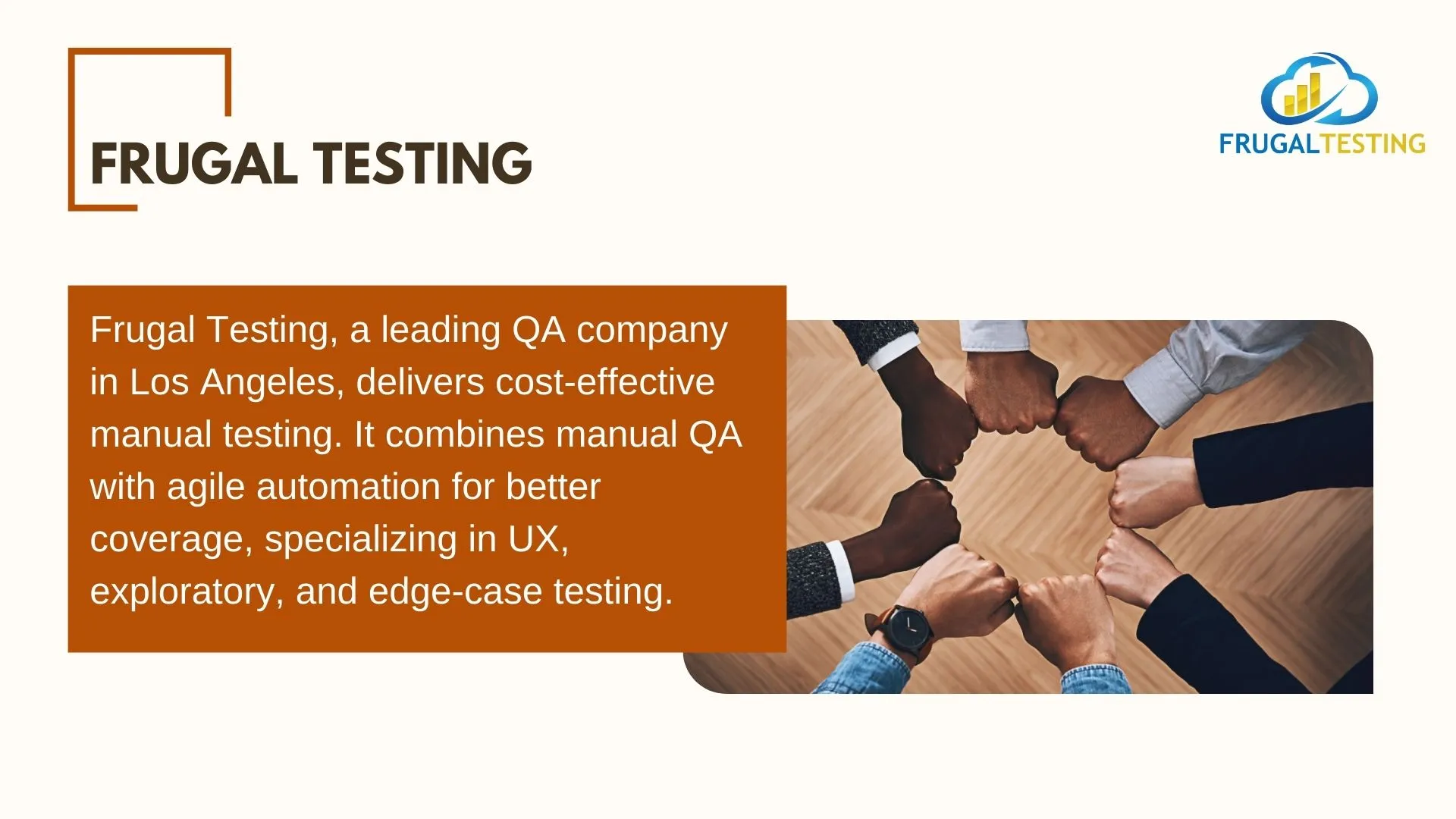
- Cigniti Technologies – Known for its enterprise-level software QA services and manual software testing services, with a strong foothold in media and e-commerce platforms.
- QA Mentor – Offers both manual QA testing services and QA automation testing services with scalable models for startups and enterprises alike.
- Testlio – A crowdsourced QA testing services platform with strong emphasis on user experience and real-world scenario testing.
- Abstracta – Provides manual and automated tools for testing, focusing on performance testing, API validation, and functional testing for web and mobile apps.
Choosing a provider with a solid market presence, verified reviews, and experience with high-load systems is essential for building a reliable QA process and scaling efficiently.
Key Advantages of Manual Testing for Quality Assurance
In the era of AI in test automation and self-healing scripts, it may be tempting to rely solely on automation. However, manual testing services still play a critical role in overall software testing and quality assurance services. Their human-centric approach brings several key advantages:
- Empathy-Driven Testing – Humans understand nuances that automation tools can’t, such as color contrast, emotion-triggering design flaws, and language context.
- Flexible and Fast in Unscripted Scenarios – Ideal for exploratory testing, ad hoc feedback, or new feature validation.
- Rapid Feedback in Agile Environments – Supports shift-left testing and can easily integrate into DevOps pipelines and CI/CD pipelines.
- Effective for Visual and Usability Testing – Especially in consumer-facing products where user satisfaction is paramount.
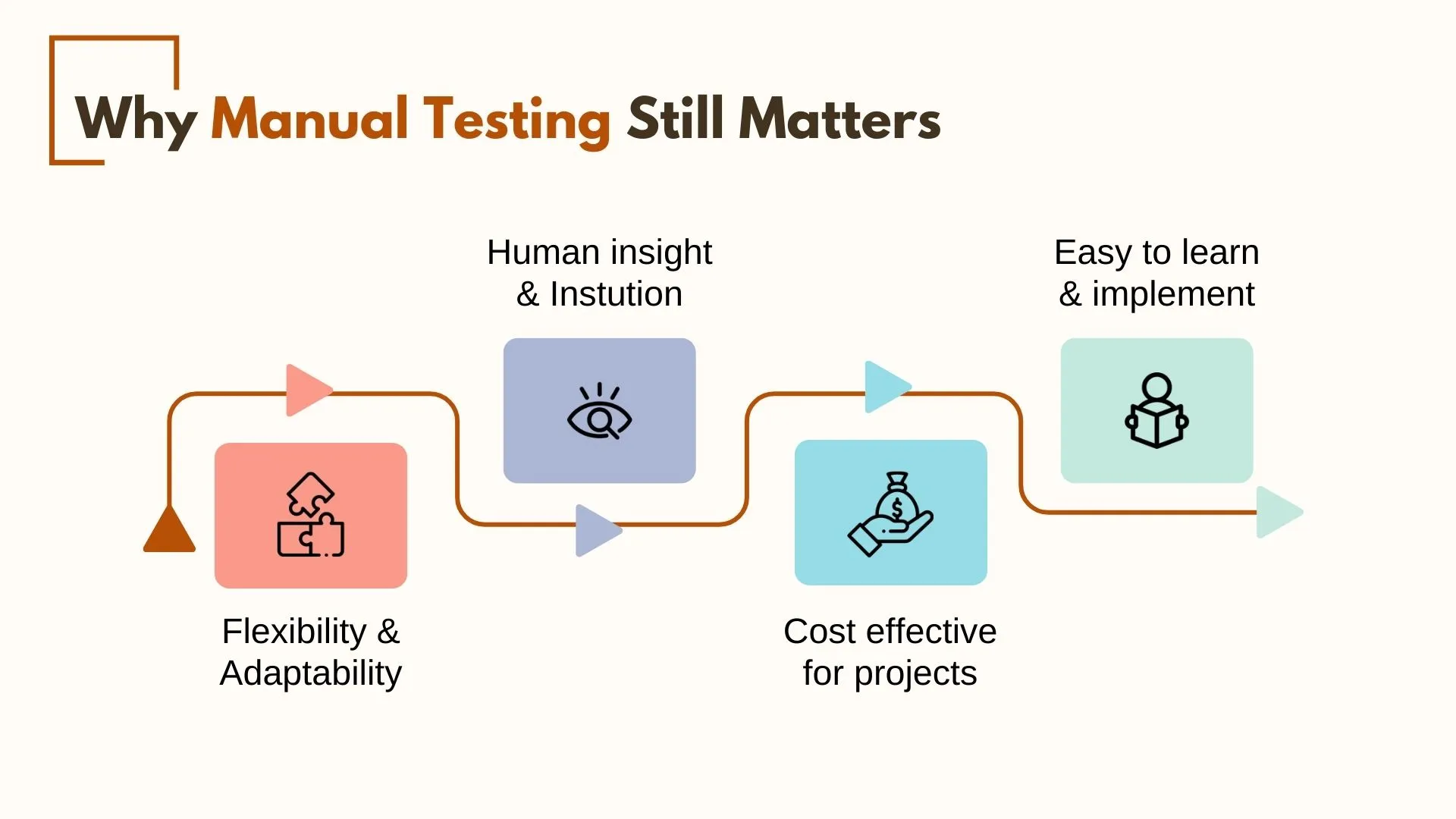
How Manual Testing Enhances User Experience and Bug Detection?
Manual testers observe and interact with the application like real users, making it easier to identify usability bottlenecks, UI bugs, and logical flaws that scripted tests may miss. Unlike test automation services, manual testing allows for spontaneous observation—critical when testing dynamic features in media streaming services, real-time applications, or web apps.
It also enables exploratory testing and functional testing under real-world conditions—offering insights into user flows, test case effectiveness, and platform stability. These findings not only improve quality assurance software testing but directly contribute to enhancing the overall user experience.
Cost-Effectiveness of Manual Testing for Mid-Sized Businesses
While QA automation testing services promise long-term savings, setting up and maintaining test scripts requires significant initial investment. For mid-sized businesses, especially those with limited technical resources or shorter development cycles, manual QA testing services offer a more cost-effective solution.
- Lower Upfront Costs – No need for expensive tools, frameworks, or training.
- Pay-as-You-Go Flexibility – Scale QA efforts based on release schedules or product updates.
- Minimal Maintenance – No script upkeep as applications evolve.
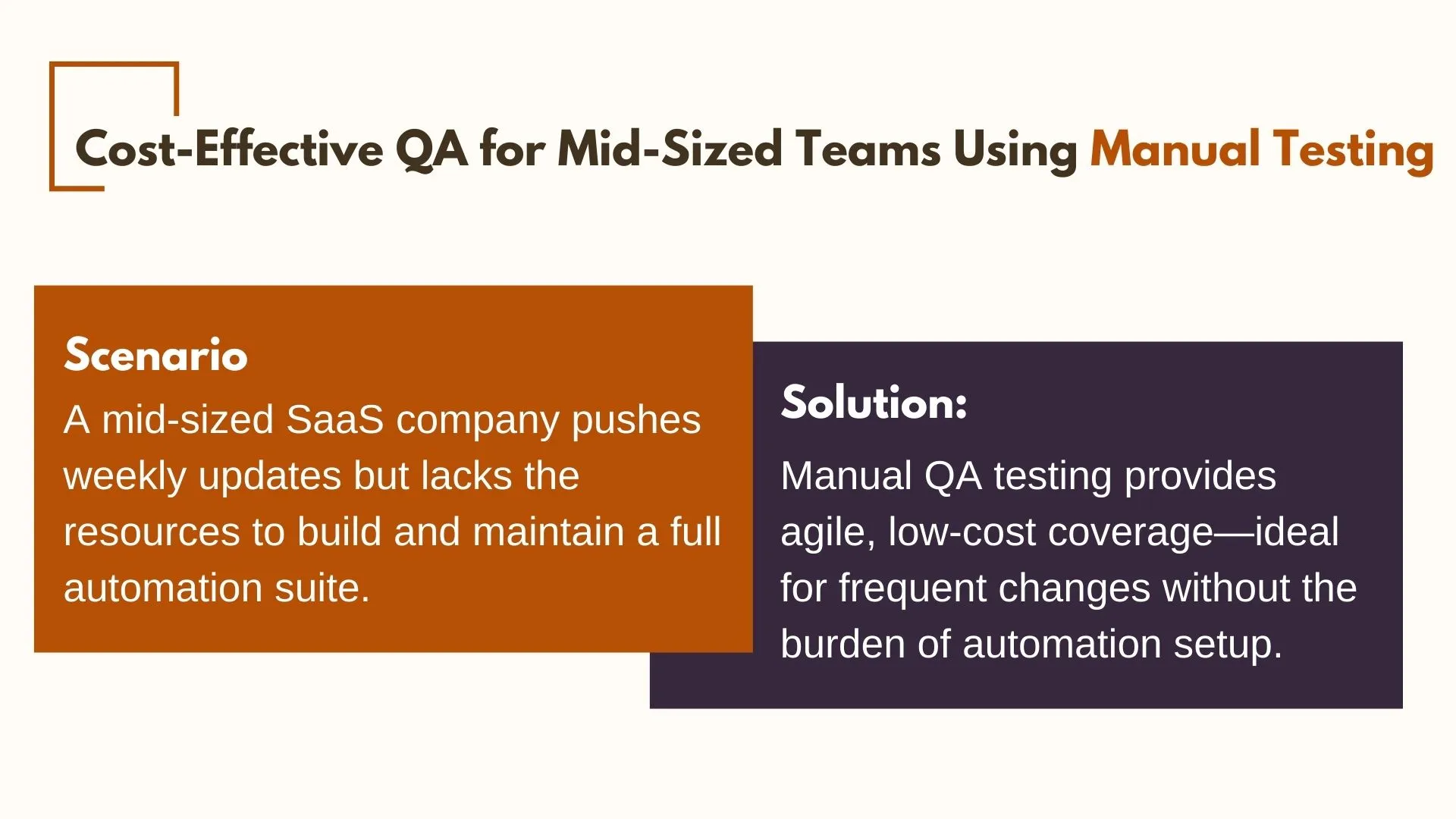
Many software quality assurance services companies in the U.S., including providers of outsourced software quality assurance services, offer hybrid pricing models that help mid-sized businesses balance cost with quality.
When Manual Testing Makes More Sense Than Automation?
While software testing automation services offer speed and scalability, there are many situations where manual testing services are not just viable—but the smarter choice.
- Short-term projects or MVPs, where automation setup is time-consuming and unjustified.
- UI/UX-focused applications that need human feedback on layout, design, and user satisfaction.
- Projects in constant development flux, where test scripts break frequently.
- API validation and real-world performance testing requiring human judgment and flexibility.
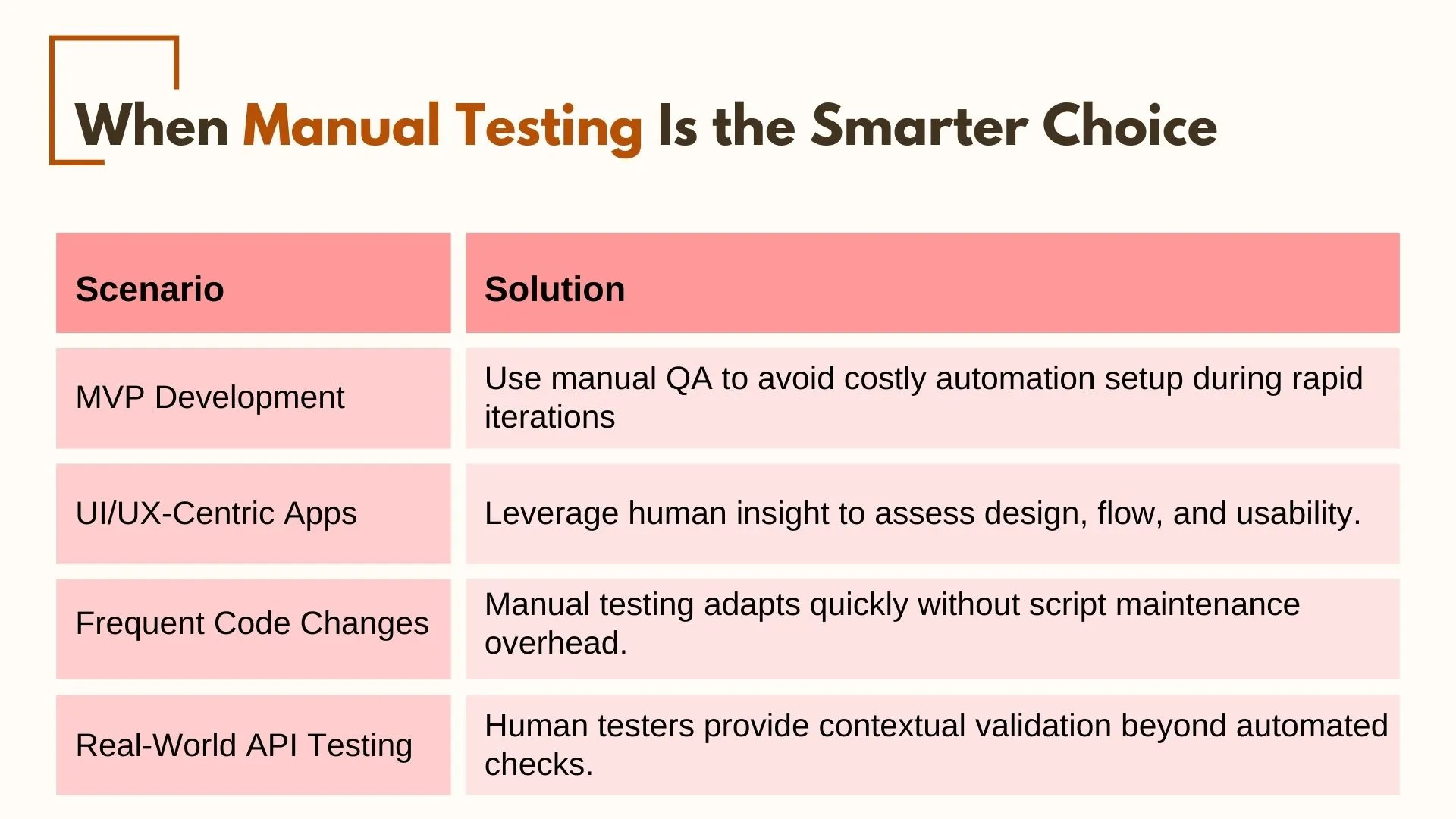
In these cases, manual software testing services bring precision, context, and adaptability that automation can’t replicate.
Real-World Scenarios Where Manual Testing Outperforms Automation
Manual QA testing plays a critical role in situations where real user behavior and decision-making are key:
- User Acceptance Testing (UAT) – End users validate real-world functionality and usability.
- Security Testing – Detecting social engineering vectors or logical access flaws.
- Localized Testing – Ensuring content, language, and cultural accuracy across regions.
- Mobile Responsiveness – Testing gestures, swipes, and orientation changes on real devices.
- Dynamic Data Forms – Human testers better handle on-the-fly field changes and validations.
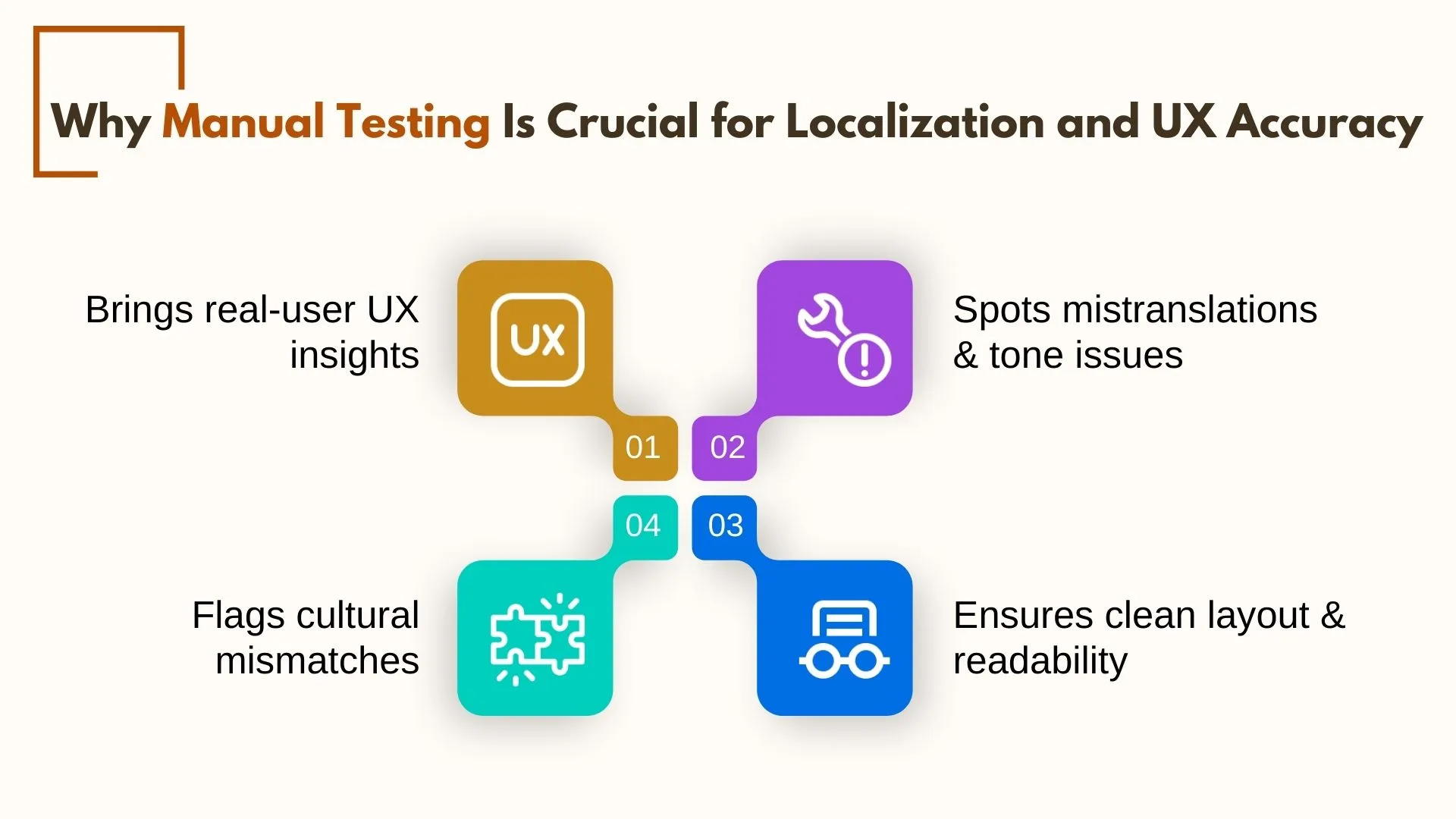
These are areas where manual QA testing services complement automation by closing the quality gap, strengthening the QA process, and delivering testing and QA services with depth and human insight.
What to Look for in a Manual QA Testing Service Provider?
Choosing the right QA services company is essential to ensuring your software is tested thoroughly and efficiently. The provider should offer more than just hands-on testing—they should act as a quality assurance partner, bringing best practices, tools, and insights into your software development workflow.
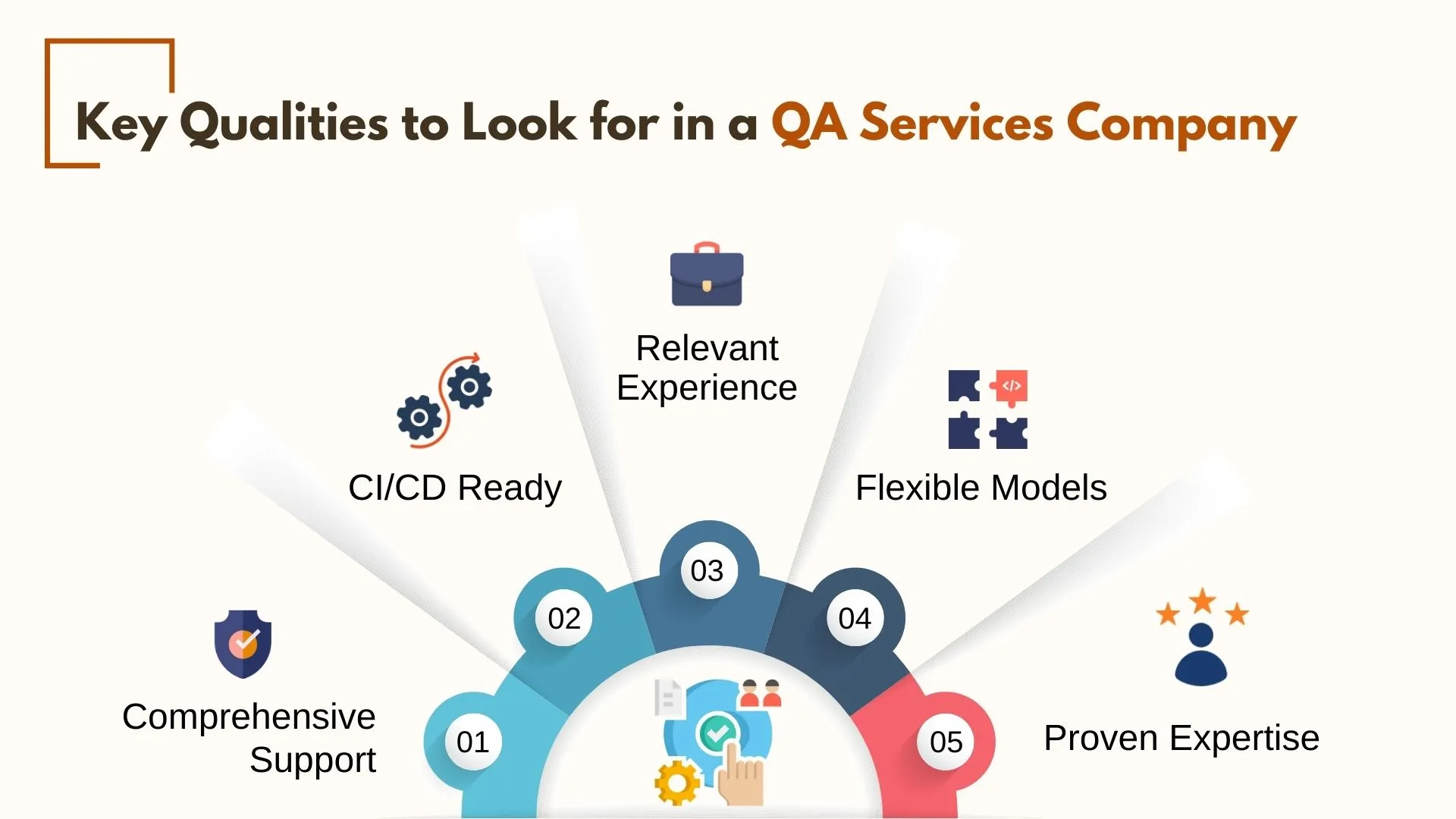
- Proven Expertise ensures the QA partner has a solid track record with successful projects, industry certifications, and deep testing knowledge.
- Flexible Models allow you to scale QA efforts based on project needs—whether for a short-term MVP or ongoing releases.
- Relevant Experience means the team understands your industry, product type, and user expectations leading to more accurate and targeted testing.
- CI/CD Ready QA teams integrate seamlessly into your Agile or DevOps pipeline, accelerating feedback and improving release efficiency.
Comprehensive Support goes beyond test execution—it includes strategy, planning, automation setup, exploratory testing, and post-release validation.
Together, these qualities help ensure a robust, adaptable, and high-impact QA partnership.
Essential Skills and Tools Used by Manual QA Professionals
A skilled manual QA professional isn’t just someone clicking through a UI—they’re experienced in structured test planning, scenario design, and edge-case validation. Here’s what to expect from a top-tier manual tester:

Top-tier manual testers bring not just skills, but strategic thinking to the QA process. Their ability to mimic real-world usage, identify hidden bugs, and work closely with developers ensures high-quality outputs. This human-centric approach bridges the gap between functional requirements and actual user experiences—something automation alone cannot achieve.
While these professionals rely on intuition and experience, they also use industry-standard tools to organize, document, and track their efforts efficiently.
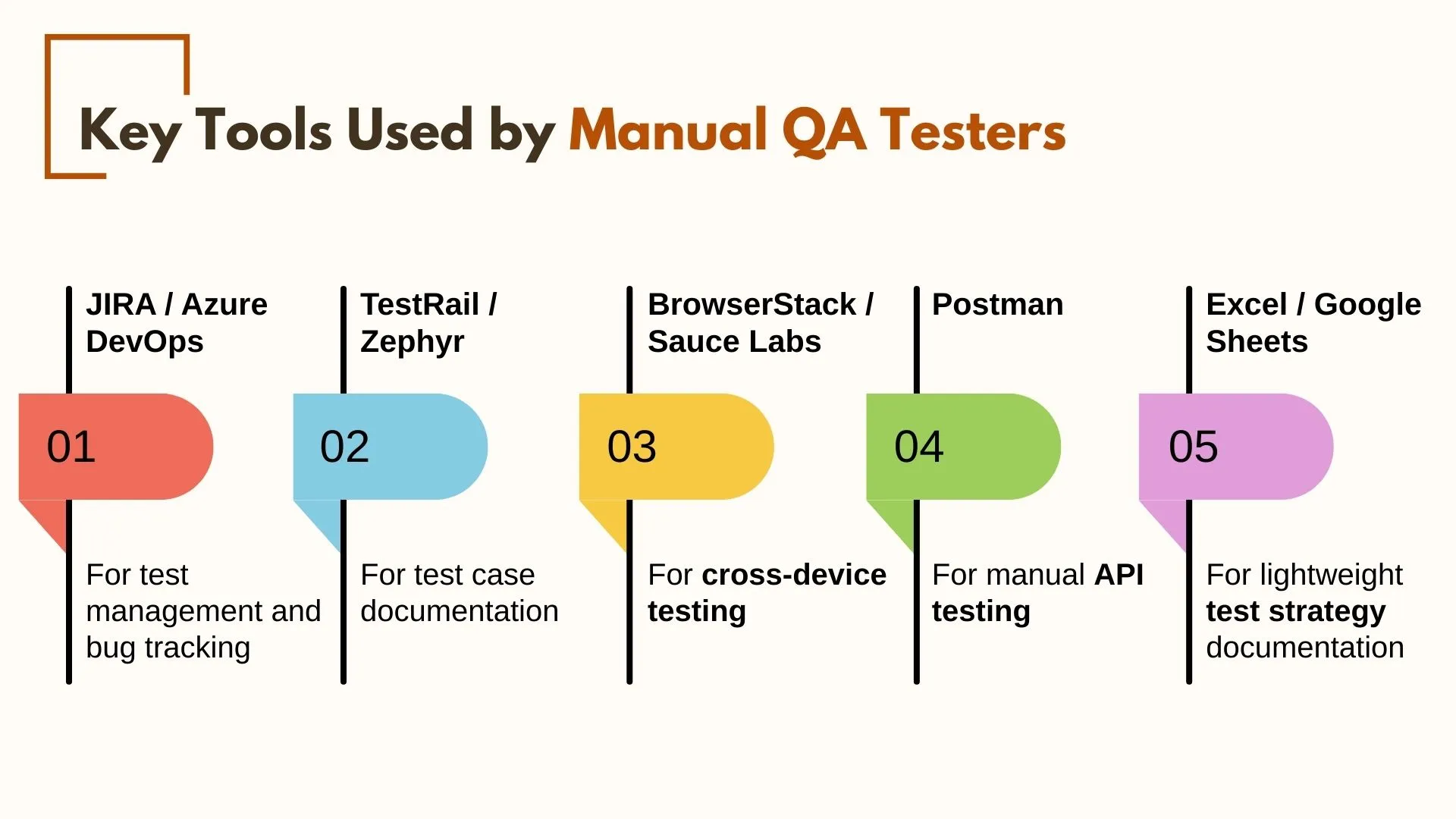
Top QA services companies ensure their teams are equipped with these tools to provide comprehensive website QA testing services, especially when dealing with e-commerce, media streaming, or real-time applications.
How Manual Testing Improves Time-to-Market and Product Stability
In today’s fast-paced digital world, businesses need to launch quickly without risking quality. Manual testing services help achieve this by offering fast, intuitive feedback that automation often misses.
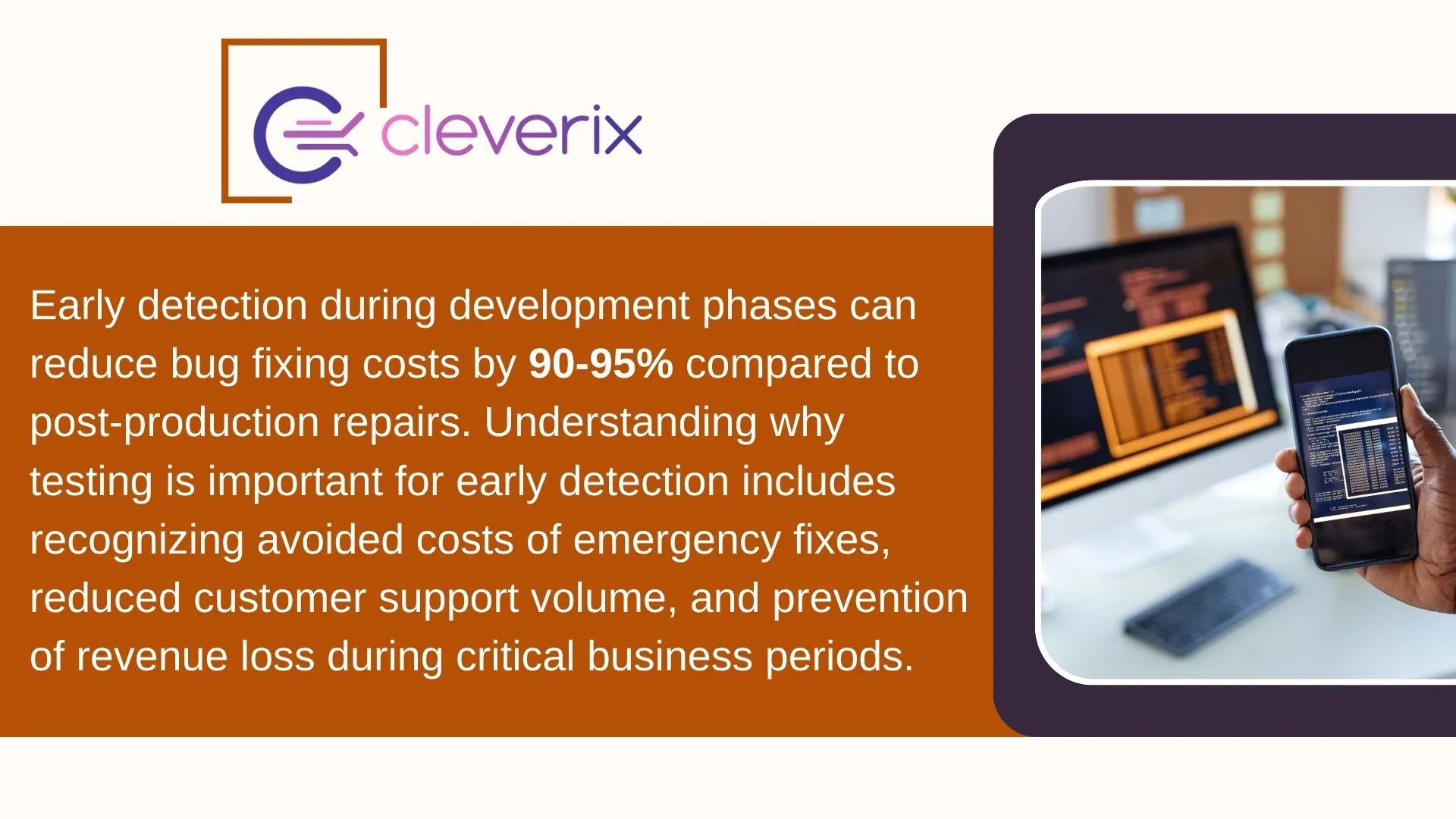
QA services companies in Los Angeles are embedding manual QA testing into CI/CD pipelines for faster feedback and better release confidence. Combined with software testing automation services, this hybrid QA strategy boosts speed, quality, and user satisfaction—especially for web apps, real-time platforms, and mobile or media streaming services.
Manual QA also plays a key role in stabilizing new features before release. By identifying UI/UX issues, edge cases, and user flow disruptions early, manual testers reduce the likelihood of hotfixes and rework—allowing teams to ship faster with fewer post-release issues.
Manual QA Testing’s Role in Agile and CI/CD Environment
In Agile and CI/CD pipelines, flexibility and speed are key—this is where manual QA testing excels. As user stories and requirements evolve sprint-by-sprint, manual testing adapts quickly, enabling exploratory testing, usability validation, and real-time feedback throughout the release cycle.
Manual testers contribute to Agile ceremonies with contextual insights and user-focused validation, supporting quality assurance even during rapid iterations. While automation handles regression, manual QA ensures critical functions, edge cases, and UI/UX elements remain stable.
While automation ensures consistent regression coverage, manual software testing services validate critical areas such as:
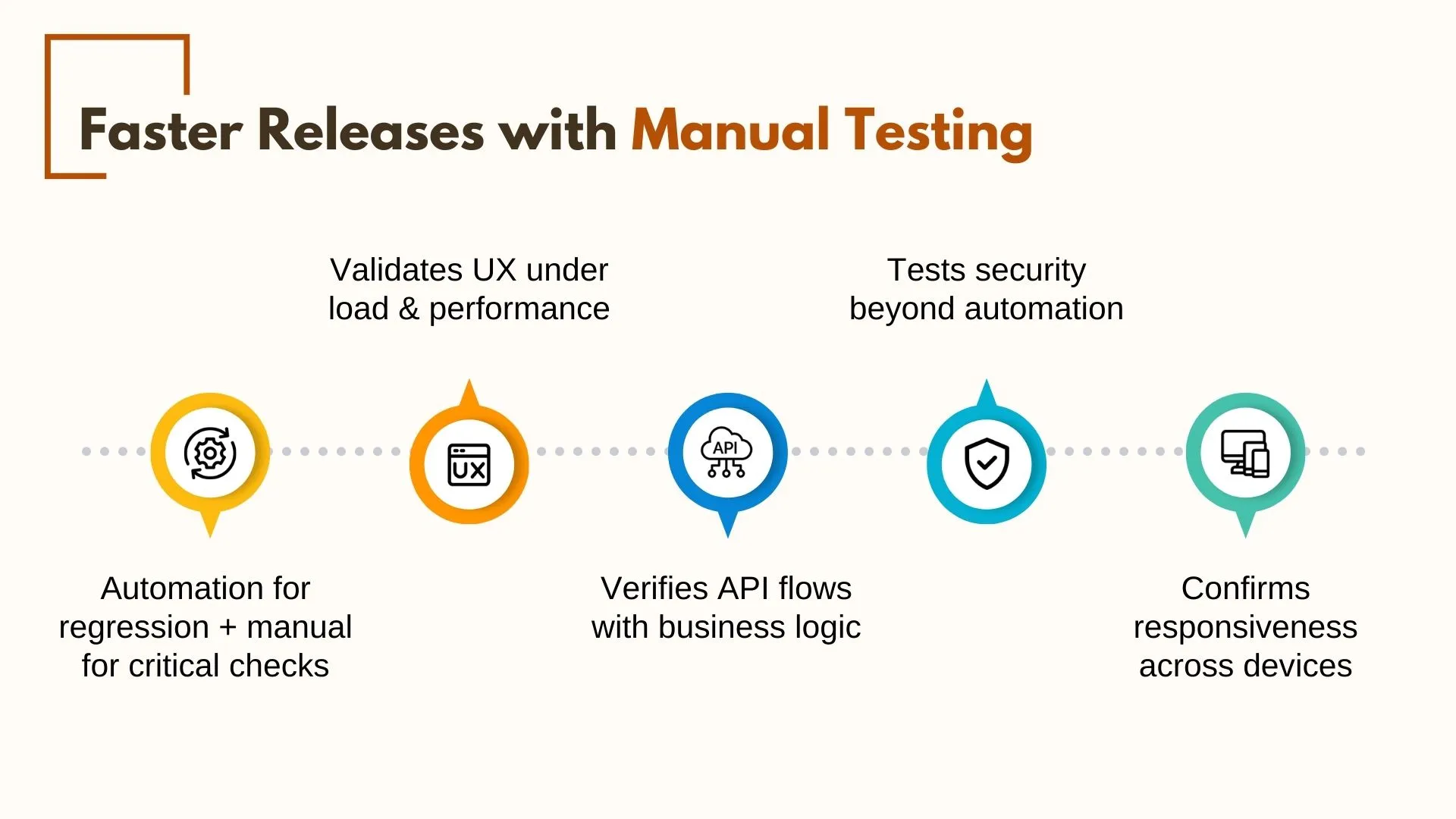
When automation breaks due to frequent code changes, manual testing acts as a reliable fallback keeping the release pipeline moving. Together, manual and automated QA services create an agile-ready, quality-first testing strategy.
Is Manual QA Testing Right for Your Business? Final Thoughts and Recommendations
Manual QA testing isn’t just a fallback—it’s a strategic choice for businesses that prioritize quality, user experience, and fast iteration. It brings the human lens that automation lacks, especially valuable when launching new products, testing visual elements, or entering unfamiliar markets.
If you're scaling fast, iterating frequently, or building for real users across platforms, manual testing delivers adaptability and deep insight from day one.

For industries like eCommerce, media, and SaaS, where performance and user experience are critical, manual testing remains essential.
Choose a QA services company with hybrid capabilities—manual and automation—with proven expertise in your domain. Look for:
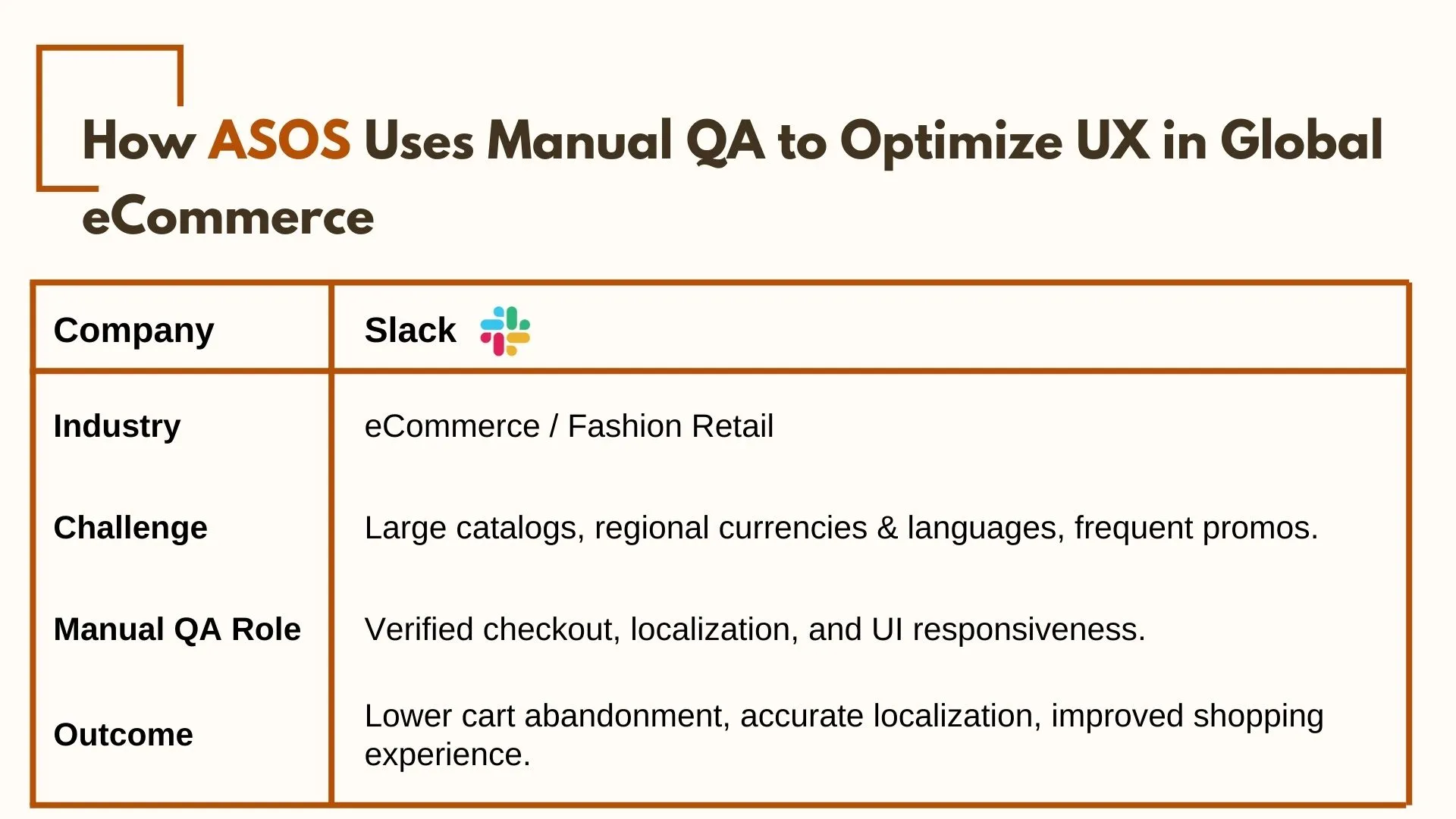
Frugal Testing helps companies thrive in QA outsourcing services by combining cost-effective test automation, agile-ready processes, and lightweight QA testing tools. Their approach improves speed, quality, and security—making QA scalable and efficient.
People Also Ask
👉Does Manual Testing need Coding?
Manual testing doesn’t require coding, as it focuses on functional validation, making it a core part of quality assurance in software testing and software quality assurance services.
👉How to write manual test cases?
Manual test cases are written by outlining steps, expected outcomes, and test data, forming the backbone of structured quality assurance testing services.
👉Which tool is used for Manual API Testing?
Postman is a widely used manual API testing tool and a staple in quality assurance testing tools for software quality assurance testing services.
👉What is six sigma roll in quality assurance?
Six Sigma improves quality assurance software testing by reducing defects and enhancing efficiency in software quality assurance services.
👉How do manual testers contribute to the overall QA process?
Manual testers ensure user-focused validation, supporting quality assurance and testing services by identifying issues automation might miss.



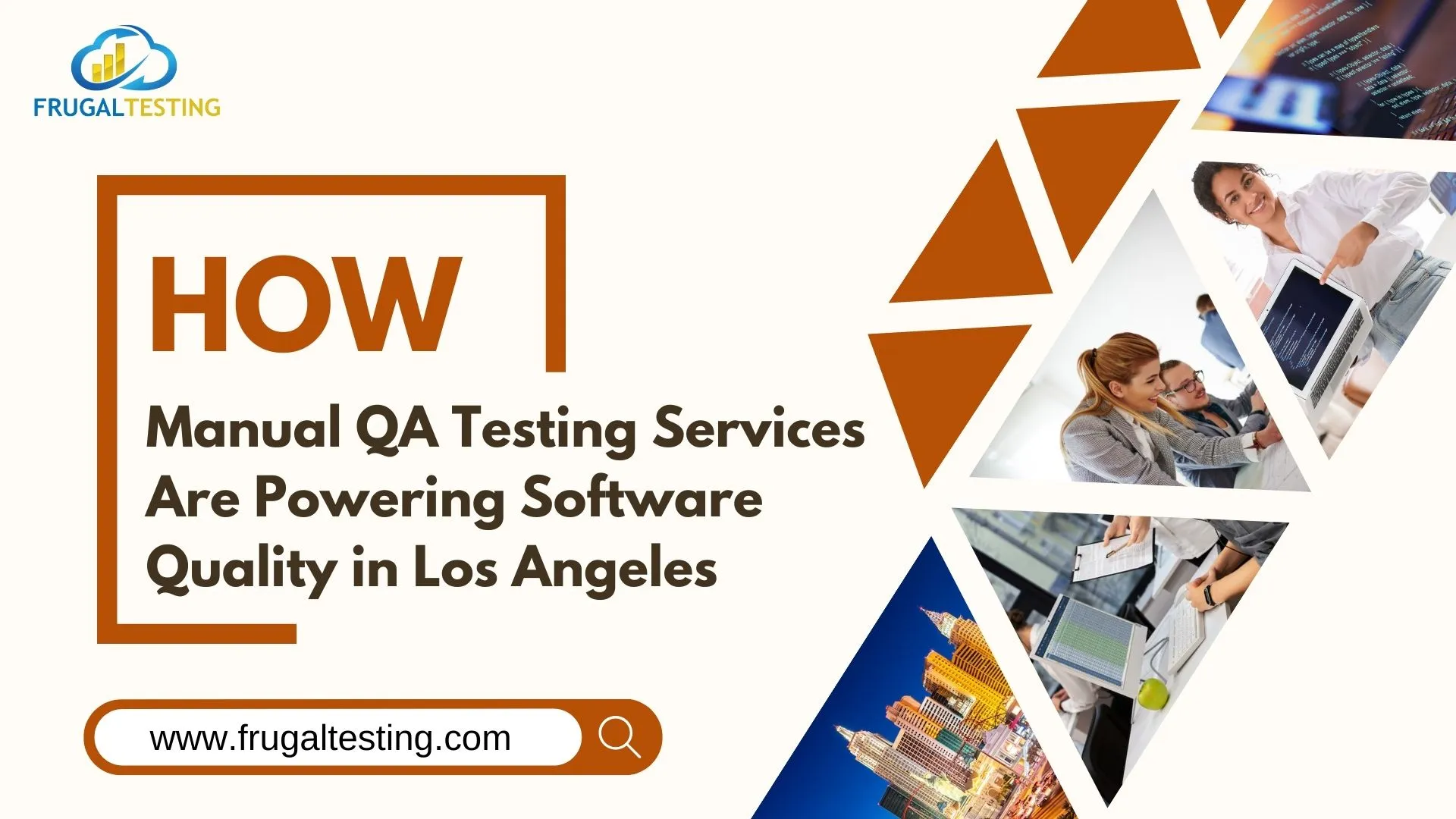

%201.webp)

